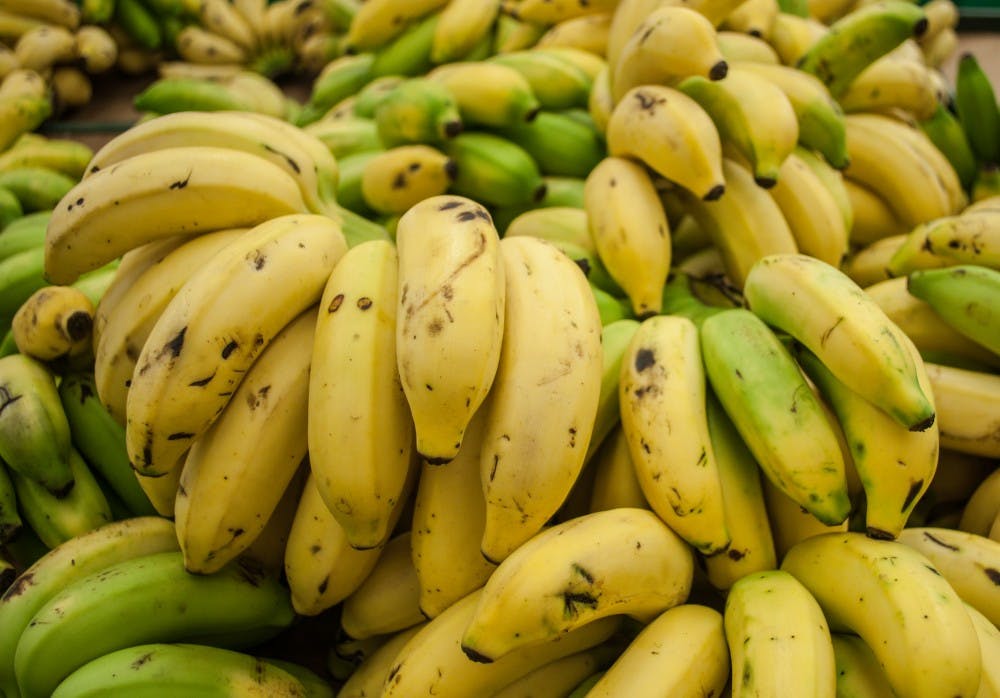Can you imagine heading over to a nearby grocery store to pick up some items and being unable to find a banana? Today the banana is one of the most common fruits purchased by consumers. In particular, the Cavendish variety, which is curved and yellow, makes up almost 100 percent of all marketed bananas in the United States.
Given how popular bananas are, it might be difficult to think of a world where they are no longer at fruit stands or stores. However, scientists are now desperately attempting to combat the effects of a fungus known as the Fusarium wilt, or Panama disease Tropical Race 4 (TR4).
The fungus damages the banana plant’s vascular system, rendering it incapable of obtaining water. This fungus has been effective at eliminating tens of thousands of acres growing Cavendish bananas on the Australian and Asian continents.
The areas around Central and South America are projected to be next in the path of the fungus. This poses a great threat to the banana supply in the United States, since the U.S. imports most of its bannanas from Latin America.
This epidemic also has serious economic implications because it places the entire $12.4 billion global banana exportation business in jeopardy.
A reason for the Cavendish’s downfall may be attributed to the fact that it is a monoculture, meaning that it has no genetic diversity — every banana is an identical clone. Some like Dan Koeppel, the author of the book Banana: The Fate of the Fruit That Changed the World, deem monoculture as much of a problem as the TR4 fungus.
“India had about 600 varieties [of bananas], but over the past two decades the Cavendish has pushed out and replaced many of those,” Koeppel said, according to the Washington Post. “And when you replace a varied multiculture with a monoculture, if a disease happens, you’re in trouble: nature comes back and bites you.”
Any chemical means of controlling the pest, such as fungicides and fumigants, have proved ineffective. Since the Fusarium wilt is contagious and has the ability to remain dormant for extended periods of time, the only remedy to exposure is to start over from scratch.
According to Randy Ploetz, who is a plant pathologist at the University of Florida, “[in a few years,] affected plantations aren’t going to be able to grow anything, because the replacement is not there.”
James Dale, who is a professor of biotechnology at the Queensland University of Technology, is currently at the forefront of efforts to develop a more resistant type of banana that maintains qualities comparable to the sweetness and transportability of the Cavendish.
The TR4 fungus was discovered in 1989 by Randy Ploetz, but it wasn’t until 2007 that the gene responsible for TR4 resistance in Musa acuminata bananas was isolated enough to be used for testing in Dale’s lab.
The results from Dale’s trials were optimistic, and his experiment may be the Cavendish’s best chance to stay the most commercially successful variety of banana.
However, Dale is no longer alone in the race to save the Cavendish, as botanists from other organizations are simultaneously trying to assess resistance to TR4 in other strains of bananas and to breed them with the Cavendish.
This epidemic isn’t an entirely new phenomenon. In the 1950s the appearance of the Tropical Race 1 (TR1) fungus nearly wiped out the Gros Michel banana, whose status at the time was comparable to that of the Cavendish today.
But with these ongoing studies, history may not repeat itself this time around.





